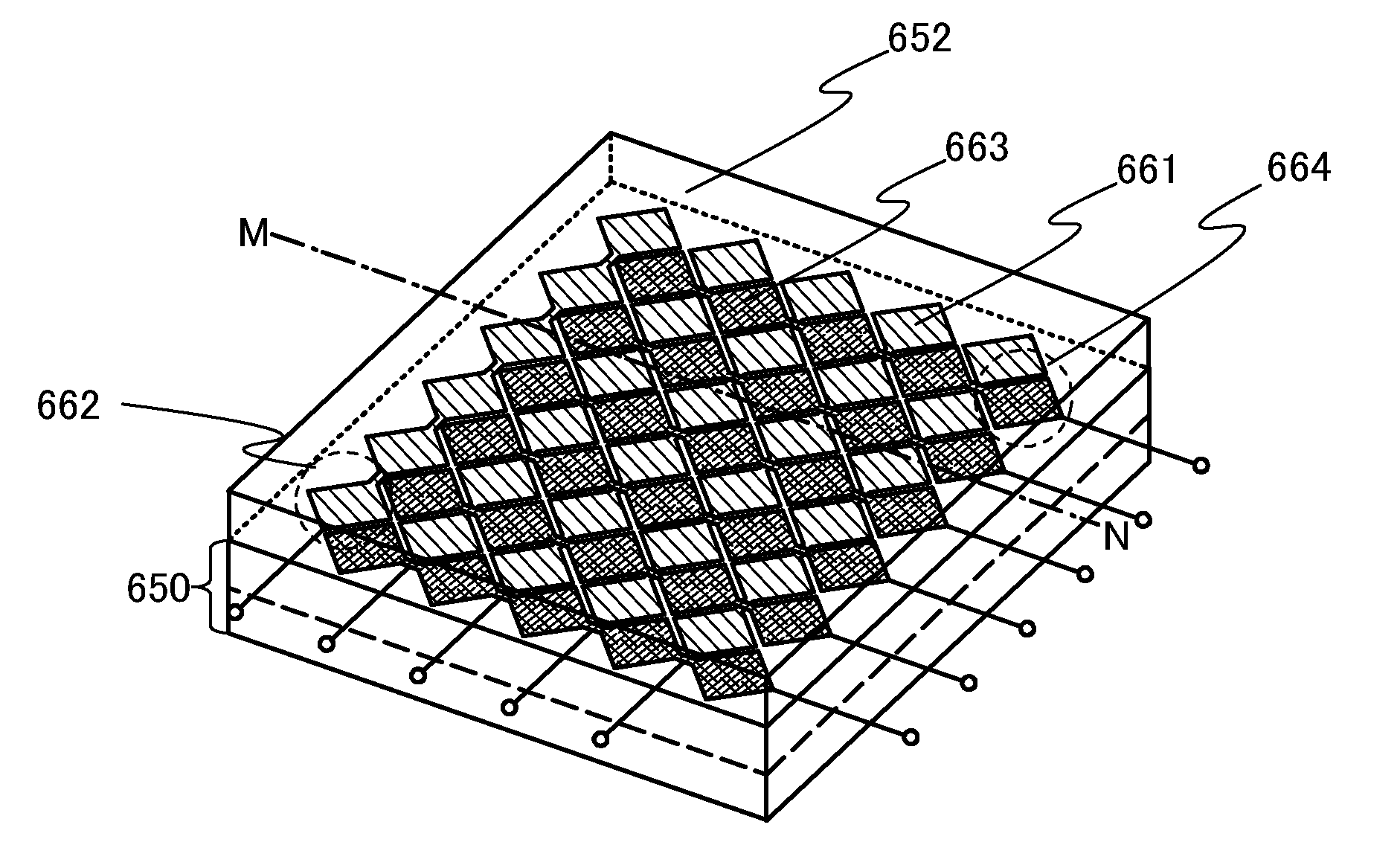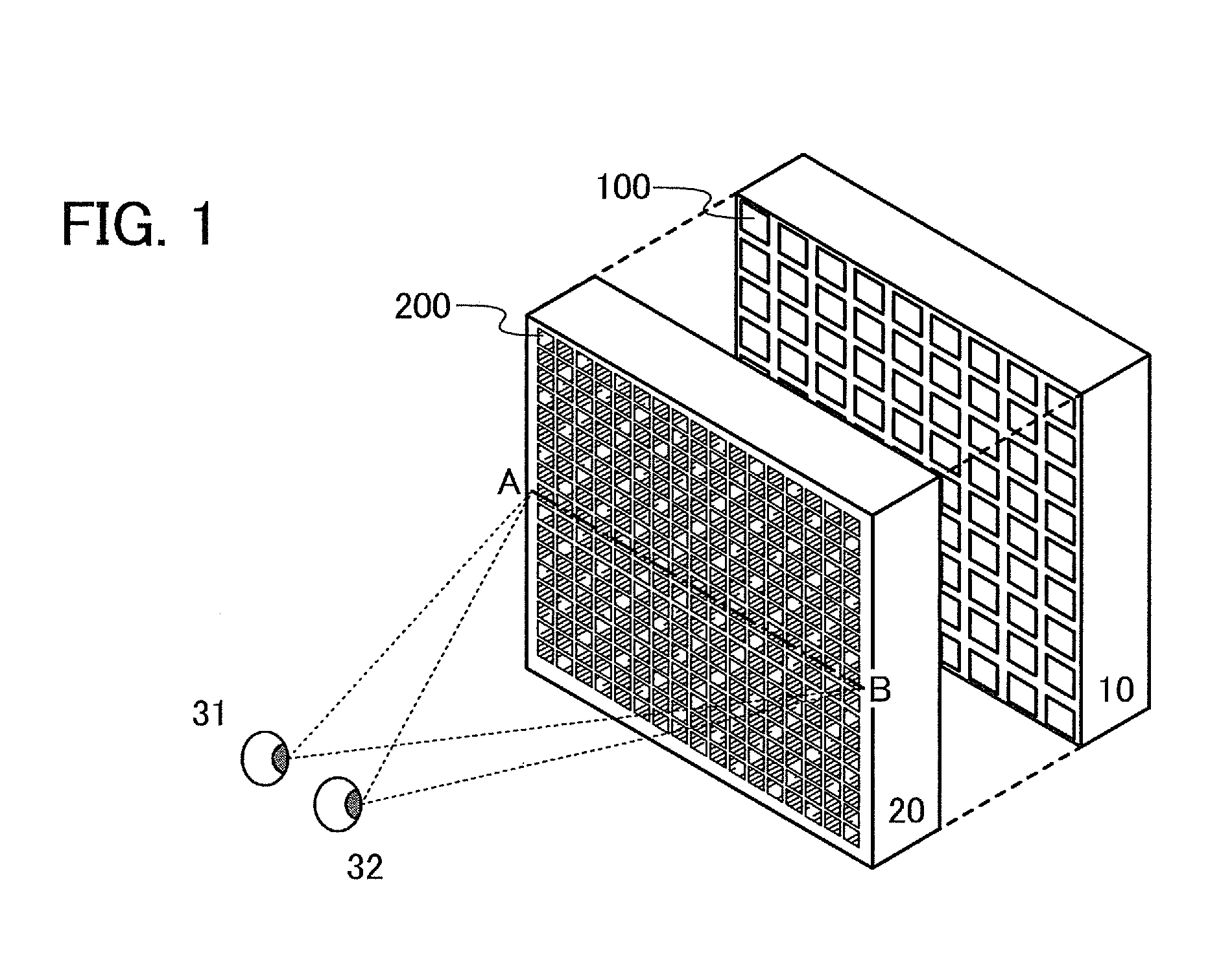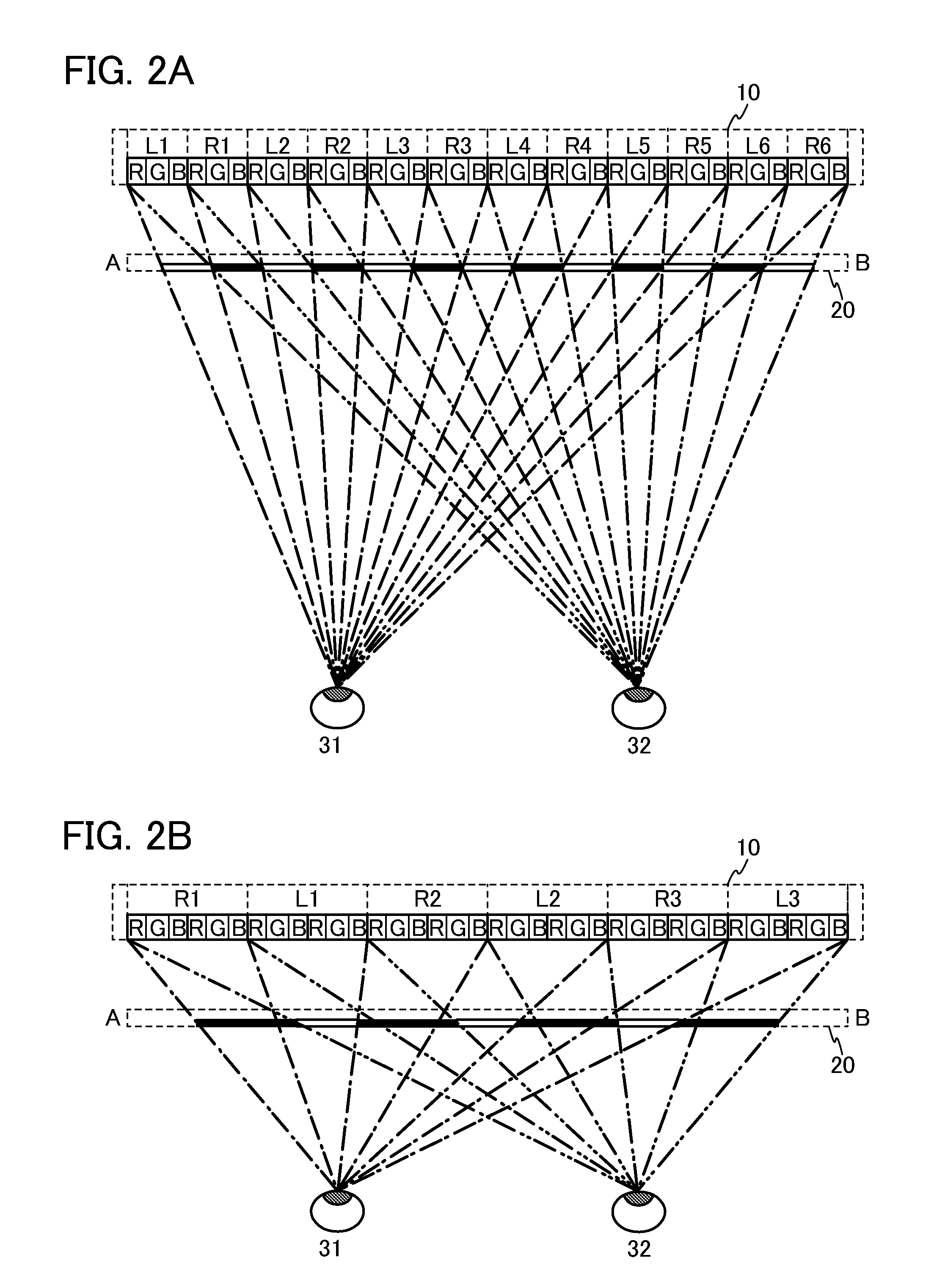Display device
a display device and display technology, applied in the field of display devices, to achieve the effect of increasing the distance with which a viewer can see 3d images by the naked eye, and high-convenient display devices
- Summary
- Abstract
- Description
- Claims
- Application Information
AI Technical Summary
Benefits of technology
Problems solved by technology
Method used
Image
Examples
embodiment 1
[0028]First, a display device according to one embodiment of the present invention will be described with reference to FIG. 1, FIGS. 2A and 2B, FIGS. 3A to 3C, and FIGS. 4A and 4B.
[0029]FIG. 1 is a schematic diagram of a display device according to one embodiment of the present invention. The display device illustrated in FIG. 1 includes a display panel 10 in which a plurality of pixel regions 100 are arranged in matrix, and a shutter panel 20 in which a plurality of optical shutter regions 200 are arranged in matrix. The density of the plurality of optical shutter regions 200 is higher than that of the plurality of pixel regions 100. In other words, the number of the optical shutter regions 200 included in the shutter panel 20 is larger than that of the pixel regions 100 included in the display panel 10. FIG. 1 shows a left eye 31 and a right eye 32 of a viewer in order to show a state of the viewer's perception.
[0030]The shutter panel 20 is provided in the direction of light emiss...
embodiment 2
[0051]In this embodiment, specific examples of a shutter panel in the display device according to one embodiment of the present invention will be described with reference to FIGS. 5A to 5D and FIGS. 6A and 6B. The shutter panel described in this embodiment is a specific example of the shutter panel 20 in Embodiment 1.
[0052]The shutter panel is constituted by a plurality of optical elements whose state is switched between a light-shielding state and a light-transmitting state. As the optical element, it is preferable to use a liquid crystal element in which liquid crystal is placed between a pair of electrodes. By application of voltage to the liquid crystal element, alignment of the liquid crystal is controlled to selectively control the state (a light-shielding state or a light-transmitting state) of the liquid crystal element.
[0053]FIGS. 5A and 5B illustrate a shutter panel 500. FIG. 5A is a plan view of the shutter panel 500. FIG. 5B is a cross-sectional view along Y1-Y2 in FIG. ...
embodiment 3
[0072]In this embodiment, examples of the structure of a display panel applicable to the display panel in Embodiment 1 will be described with reference to FIGS. 7A and 7B and FIGS. 8A and 8B.
[0073]As a display element provided in the display panel, a light-emitting element (also referred to as a light-emitting display element) or a liquid crystal element (also referred to as a liquid crystal display element) can be used. A light-emitting element includes, in its category, an element whose luminance is controlled by current or voltage, and specifically includes an inorganic electroluminescent (EL) element, an organic EL element, and the like.
[0074]FIGS. 7A and 7B illustrate an example of the structure of a display panel in which an organic EL element is used as a display element. FIG. 7A is a plan view of the display panel. FIG. 7B is a cross-sectional view along A-B and C-D in FIG. 7A. An element substrate 410 is fixed to a sealing substrate 404 with a sealant 405, and includes driv...
PUM
 Login to View More
Login to View More Abstract
Description
Claims
Application Information
 Login to View More
Login to View More - R&D
- Intellectual Property
- Life Sciences
- Materials
- Tech Scout
- Unparalleled Data Quality
- Higher Quality Content
- 60% Fewer Hallucinations
Browse by: Latest US Patents, China's latest patents, Technical Efficacy Thesaurus, Application Domain, Technology Topic, Popular Technical Reports.
© 2025 PatSnap. All rights reserved.Legal|Privacy policy|Modern Slavery Act Transparency Statement|Sitemap|About US| Contact US: help@patsnap.com



